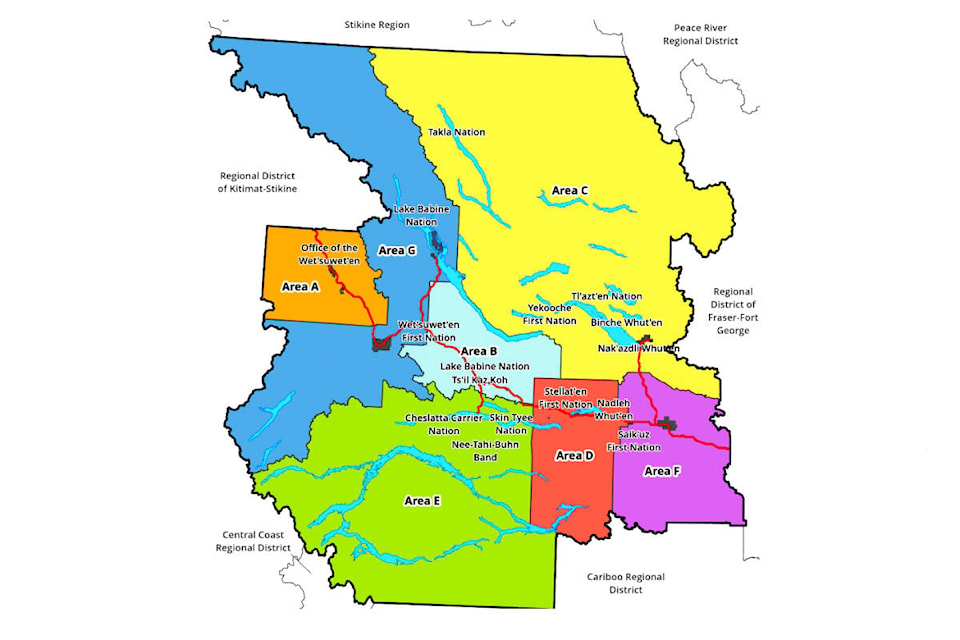The Nations of the area have been compiled into a handy guide now available for the use of staff and directors of the Regional District of Bulkley-Nechako (RDBN).
There are 14 First Nations communities within the RDBN, according to the new guide assembled by the Regional District’s First Nations liaison Juston Greer. He unveiled the document at the most recent public meeting of the mayors and directors that comprise the board, and the effort was openly appreciated.
“I just want to say thank you to Justin for this guide. How helpful is this? This is awesome. Great job,” said Granisle mayor Linda McGuire, starting the conversation about the 21-page snapshot of the area’s Indigenous cultures.
In addition to a listing of each First Nation, their current elected councillors and chiefs, and locational information, the guide also gave a glossary of common terms and links to key legislation, so as to help the RDBN table have a speedy inroad into some of the basic knowledge, government to government.
“The RDBN Reference Guide to First Nations in the Region was created to support the RDBN’s strategic focus on enhancing relationships with First Nations in the region,” Greer wrote in his introduction.
Board chair Mark Parker, the Fraser Lake Rural director, said, “I’ll be printing it off and have it on my desk. It is a fabulous document. It’s so nice to have everything in one spot, and easy to update. Great job. A very handy guide to have.”
”It is a working document that will continue to be expanded and updated regularly,” said Greer.
Francois-Ootsa Rural director Clint Lambert was thankful for it and already saw how it could be expanded. He spoke of a meeting he was at with representatives from the First Nations within his area of interest. Some did not know one of the new Indigenous councillors, so a round of introductions was made by all in the room. Key to that, said Lambert, was a description of family lineage. He wondered if future editions might be able to include that.
The guide so far does not specify each Nation’s traditional governance and cultural structures of clans and hereditary title, so growth has some clear research pathways ahead.
Smithers mayor Gladys Atrill spotted some holes in the First Nations information at the western end of the Regional District, as another way to enhance the current document.
As National elections are held, and new legislation and case law comes into effect, the guide would naturally need updating, meaning constant vigilance and editing would be needed to maintain the relevance of the document.
The 14 First Nations communities specified in the Regional District guide were:
Binche Whut’en
Cheslatta Carrier Nation
Lake Babine Nation
Nadleh Whut’en
Nak’azdli Whut’en
Nee-Tahi-Buhn
Saik’uz First Nation
Skin Tyee
Stellat’en First Nation
Takla Nation
Tl’azt’en Nation
Ts’il Kaz Koh
Wet’suwet’en First Nation
Yekooche First Nation
